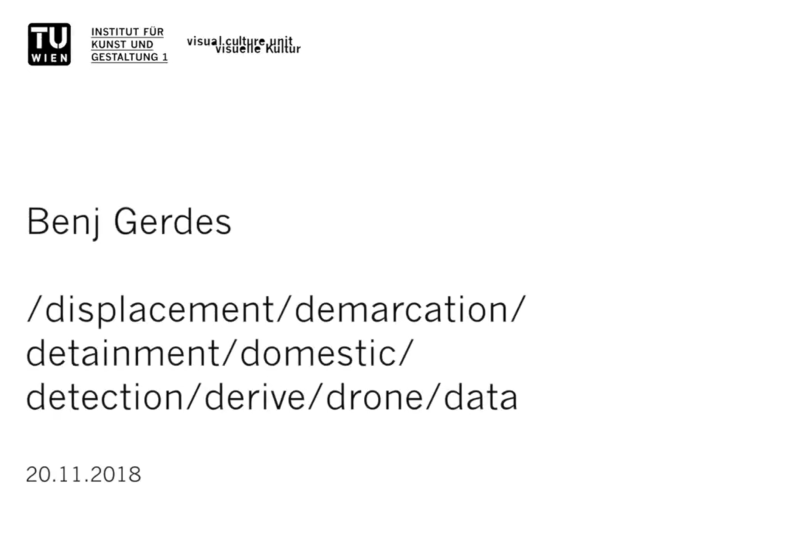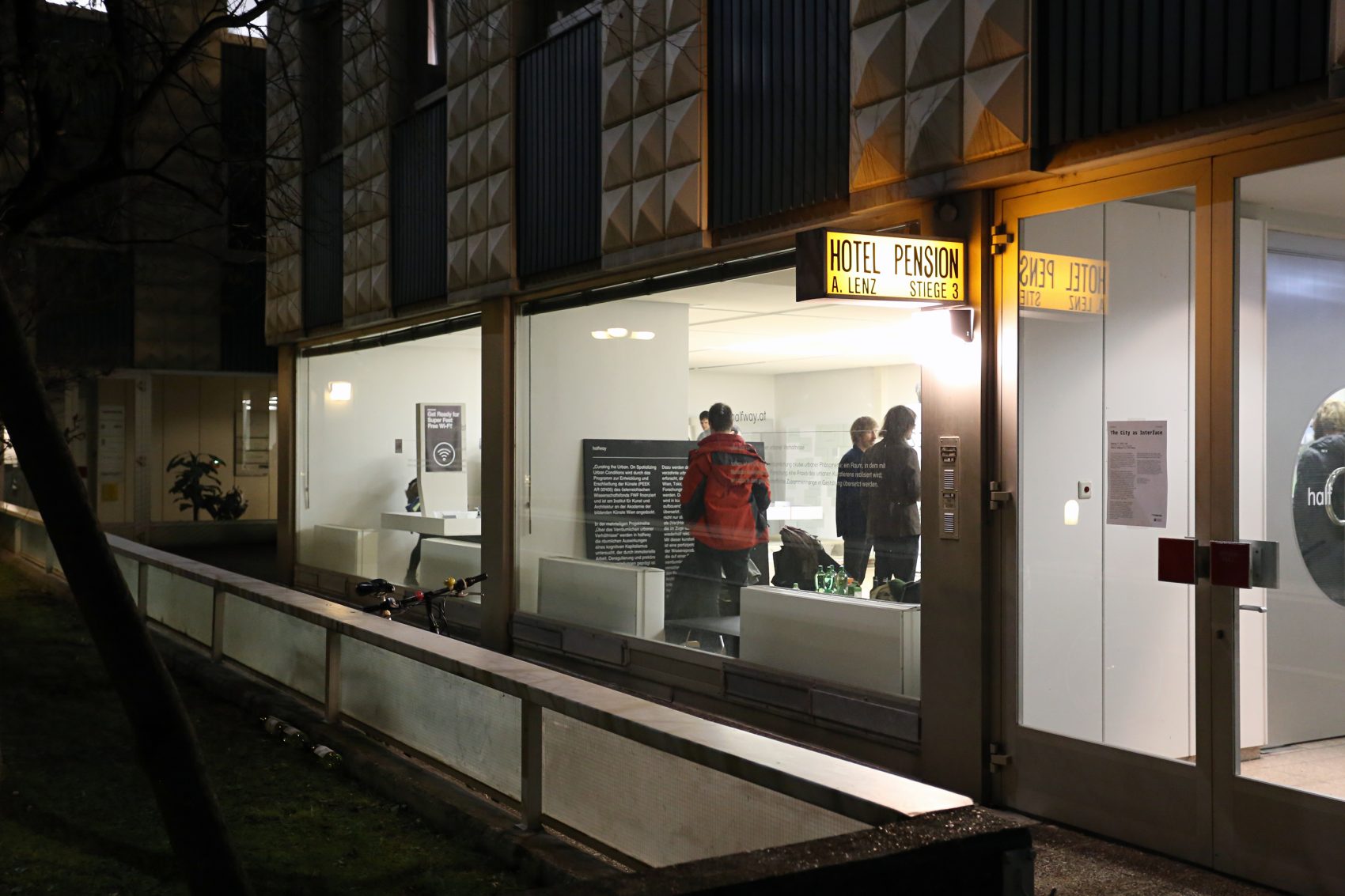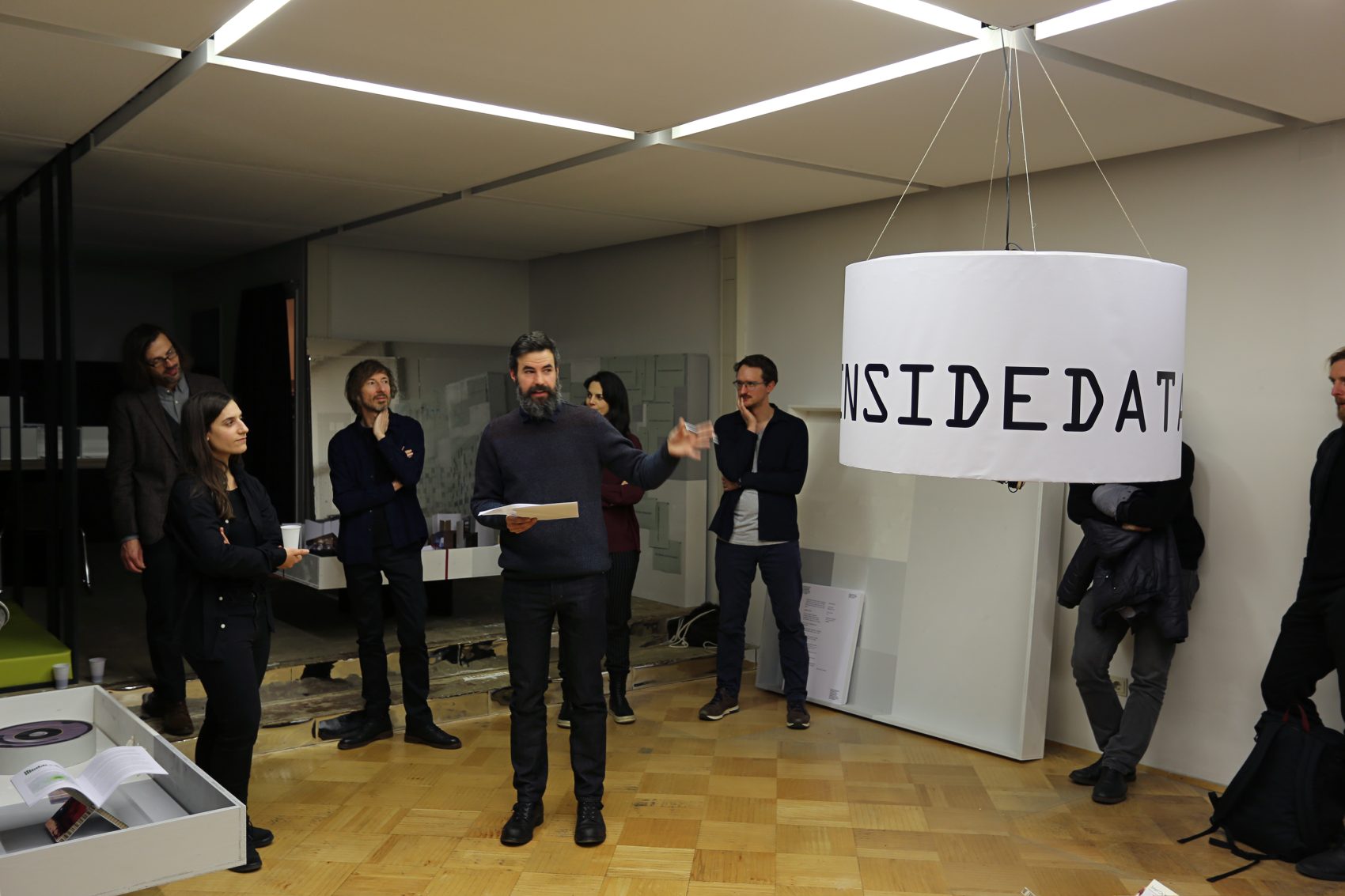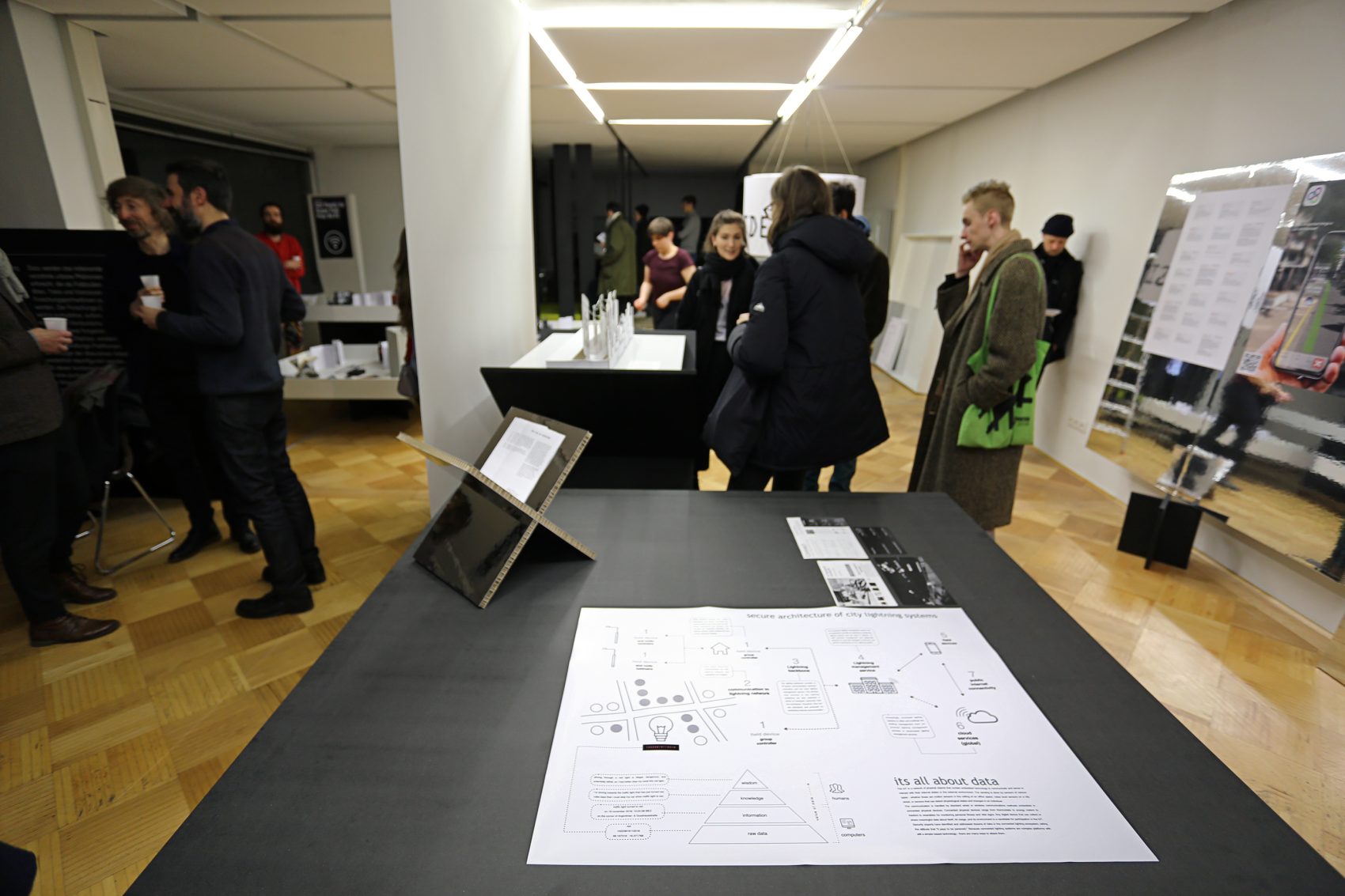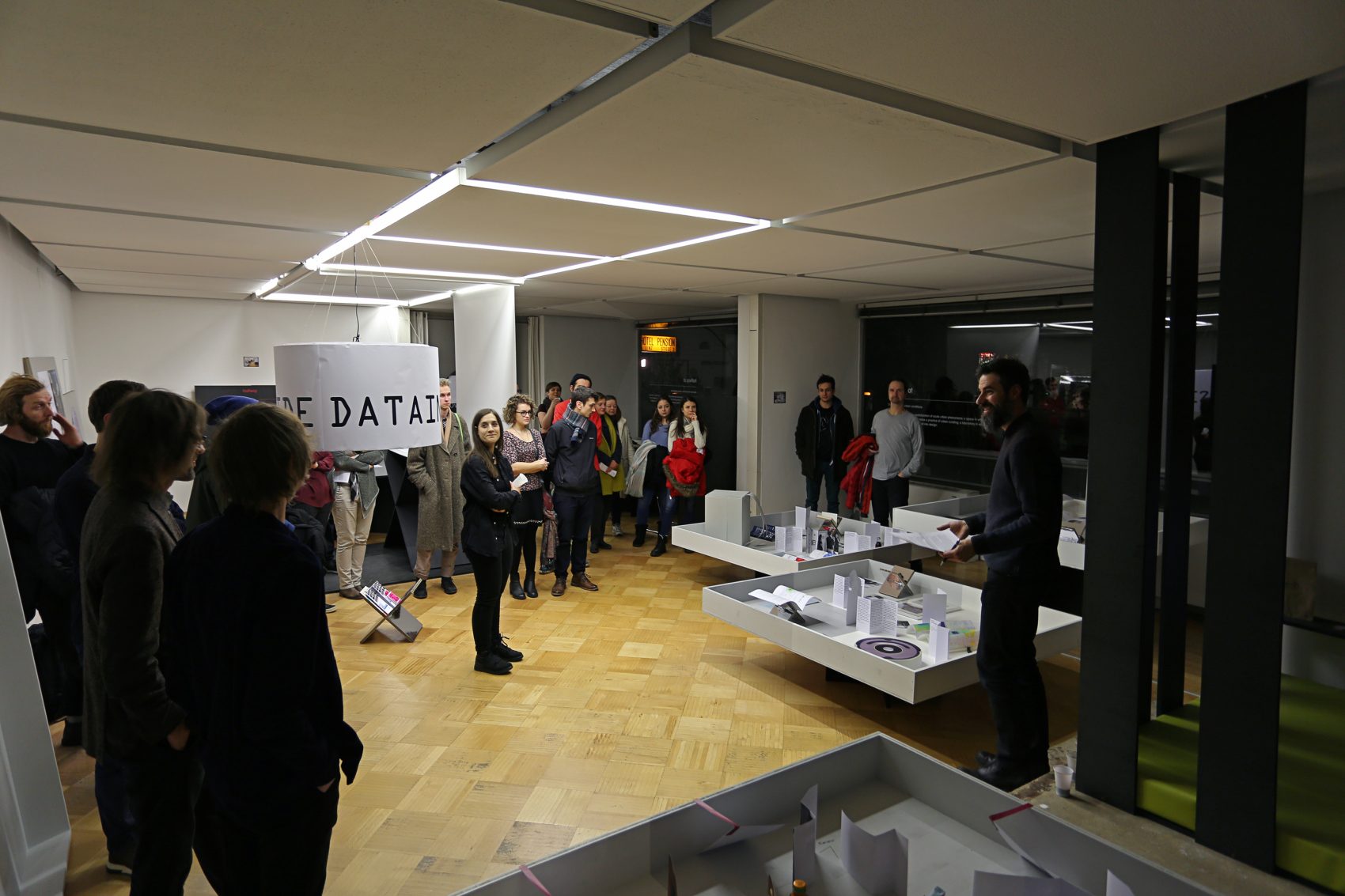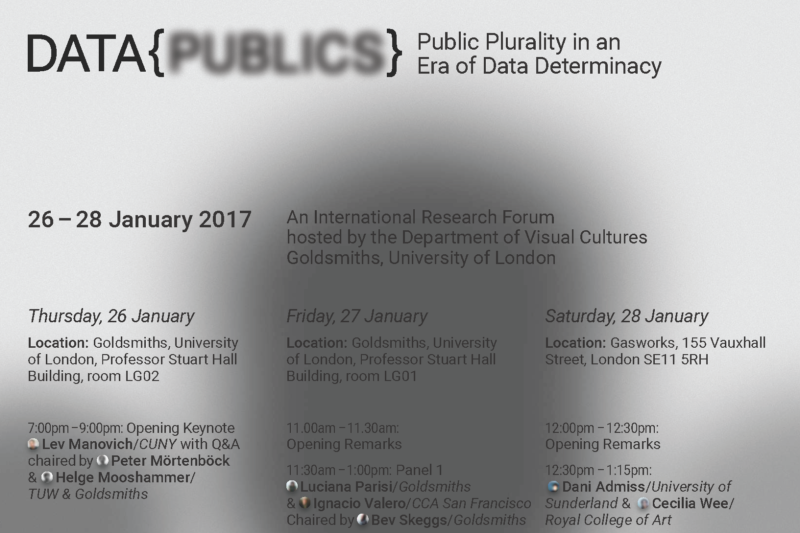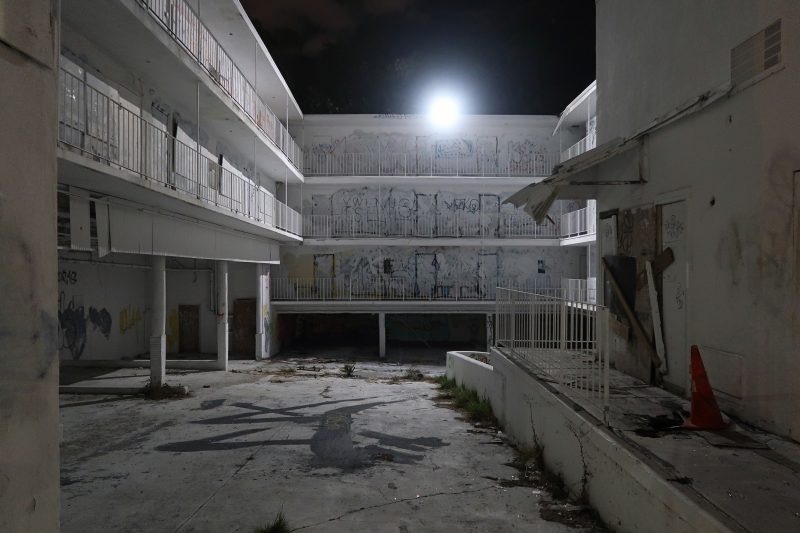- 2018–2019
- Vienna
- Data Publics
CITY AS INTERFACE, TU Wien and Halfway Gallery, Vienna
An event series at TU Wien and Halfway Gallery, Vienna
November 2018–September 2019
DATA/ DISPLACEMENT / DEMARCATION / DETAINMENT / DETECTION / DOMESTIC / DRONE / DERIVE
TALK by BENJ GERDES
This talk aims to render visible operations of capital in the present by juxtaposing research on three conjoined trajectories: human migration and refugee resettlement and rehousing industries, data networks and IT infrastructure, and global logistics and sea-based networks for shipping materials and goods.
The event will provide ample opportunity for everyone interested in the subject to get to know Prof. Gerdes and to sound out future ties between LIU and TU Wien. Under the auspices of the Fulbright Specialist Program, Benj Gerdes will work in close collaboration with members of the Visual Culture Department directed by Prof. Peter Mörtenböck at the Institute of Art and Design on pressing issues involving the urban realm and new technologies. He will teach as visiting artist in the Master of Architecture course “Regimes of the Visual” and conduct research in collaboration with the Data Publics project.
20 November 2018, 19:00
TUW, Seminarraum Argentinierstraße 8, 1040 Wien
PROP-TALK 2
with PETER MÖRTENBÖCK and HELGE MOOSHAMMER
Halfway regularly hosts Prop-Talks in which specific spatial situations in the halfway building complex are used as “stages” for discourse and equipped with specially developed props (models of symptomatic objects).
Prop-Talk 2 focuses on the spatial impact of economic transformations. Peter Mörtenböck and Helge Mooshammer discuss emancipatory strategies in the context of critical urban engagement.
Opening: 17 January 2019
Halfway Gallery
Halbgasse 3-5, 1070 Viennafireside lounge
THE CITY AS INTERFACE
PRESENTATION and DISCUSSION of outcomes of a workshop led by BENJAMIN GERDES, New York-based artist and 2018 Fulbright Specialist at TU Wien, and CHRISTIAN FRIESS, researcher at the TUW’s Visual Culture Department, with master and PhD students of the Visual Culture module at the School of Architecture and Planning, TU Wien.
From small scale neighborhood projects to collaborative city-making, from optimizing urban infrastructures to solving all kinds of social problems, platforms have stretched into almost all dimensions of the social and urban fabric in many places already. What is common to all those platforms is that huge amounts of data are aggregated and processed. Data, which is incessantly created and/or used, intentionally and/or unintentionally, by citizens interacting with both, the physical and the digital environment. However, platforms are not neutral mediators but infrastructures which embody ideologies and visions – be it technocratic utopias, social agendas or neoliberal politics – and they shape new public spheres: “data publics“.
Students investigated this “platform mentality“ through mapping projects during the winter semester and, while developing these visualizations, discussed how architecture facilitates new encounters between people, data, and space in these contemporary visions for the 21st century city. What orientation do related projects take up in relationship to the accumulation of data, capital, and/or state or economic power?
Opening: 21 January 2019, 19:00
Exhibition: 22–26 January 2019halfway, Halbgasse 3–5, 1070 Vienna
USER ENVIRONMENTS IN THE INTERFACE CITY
BRUNCH TALK and PROJECT PRESENTATION with CHRISTIAN FRIESS
21 September 2019, 11:00
There is the seductive fiction of a reality, in which all actions and events can be integrated into a digital system that enables maximum efficiency, sustainability, security, and satisfaction of needs and desires of every (selected) individual. It is a fiction of unity and frictionlessness built on the assumption of a set of perfectly working and seamlessly integrated machines. But the truth is, machines don´t always work that well.
Juxtaposing sober patent drawings of urban digital technologies with photographs depicting their problematic implementation, CHRISTIAN FRIESS and BENJAMIN GERDES’ project “User Environments in the Interface City” makes visible the problematic relationship of technology-driven imaginations and their broken real world doppelgangers.
